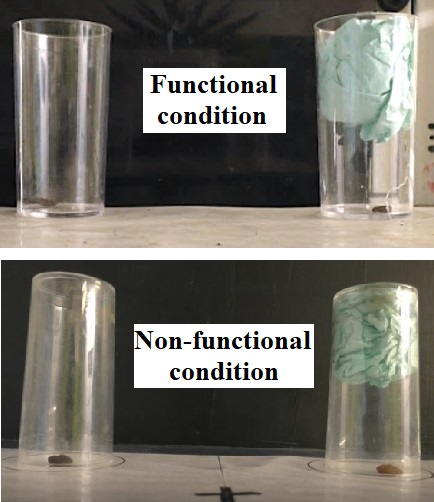So excited to share my first first-author paper  https://abs.twimg.com/emoji/v2/... draggable="false" alt="🥳" title="Partying face" aria-label="Emoji: Partying face"> with @TownrowLuke @Chloeiwright & @AmandaMSeed! Out now in animal behaviour and cognition’s special issue on ‘Folk Physics’ http://animalbehaviorandcognition.org/uploads/journals/28/ABC_2020_Vol7(3)_Jordan_et_%20al.pdf.">https://animalbehaviorandcognition.org/uploads/j... A thread 1/10
https://abs.twimg.com/emoji/v2/... draggable="false" alt="🥳" title="Partying face" aria-label="Emoji: Partying face"> with @TownrowLuke @Chloeiwright & @AmandaMSeed! Out now in animal behaviour and cognition’s special issue on ‘Folk Physics’ http://animalbehaviorandcognition.org/uploads/journals/28/ABC_2020_Vol7(3)_Jordan_et_%20al.pdf.">https://animalbehaviorandcognition.org/uploads/j... A thread 1/10
We looked at what the Capuchin and Squirrel monkeys @RZSSLivingLinks understand about solidity (that objects can’t pass through solid objects)
First, we gave them a modified trap task where they had to push a reward either left or right out of a box whilst avoiding a trap 2/10
First, we gave them a modified trap task where they had to push a reward either left or right out of a box whilst avoiding a trap 2/10
In previous research, removing the tool component of the task made it easier for chimpanzees and children to solve. But none of the capuchin or squirrel monkeys learnt to avoid the trap and so none of the monkeys passed the task 3/10
Next, we looked at if they could avoid the same trap in a simplified/more familiar set up by presenting them with a forced choice task between two cups: one open and one blocked by the trap they encountered in the box. Both species learnt to avoid the cup with the trap 4/10
Why did they fail the trapbox but pass the cup task? Did they just learn which cup to avoid without understanding the function of the trap? We did another experiment to compare learning when the cue had a functional vs nonfunctional role in preventing them releasing a reward 5/10
Now they had to avoid a cup containing a green paper-towel ball. In the functional condition the paper-towel ball blocked the reward, in the non-functional condition, with inverted cups, the paper-towel ball was just a cue they could learn to avoid 6/10
In both conditions the monkeys received a reward for choosing the open cup, and nothing for choosing the cup with the paper-towel. The squirrel monkeys didn’t pass either condition within 60 trials. 7/10
In contrast, the capuchin monkeys passed both conditions. Interestingly, performance was much better in the functional condition, suggesting that they may have some understanding of physical property of solidity 8/10
It’s still a puzzle why the capuchins, failed the trap task if they are sensitive to the functional role of a blockage. But previous research shows that they find multiple relations among external objects difficult. 9/10
In the trap task, there is the reward, the shelf, the gap, and the trap to consider, whereas in the cups there is only the food (or your own action) and the trap. Looks like it will take more work to understand this fully! 10/10

 Read on Twitter
Read on Twitter


